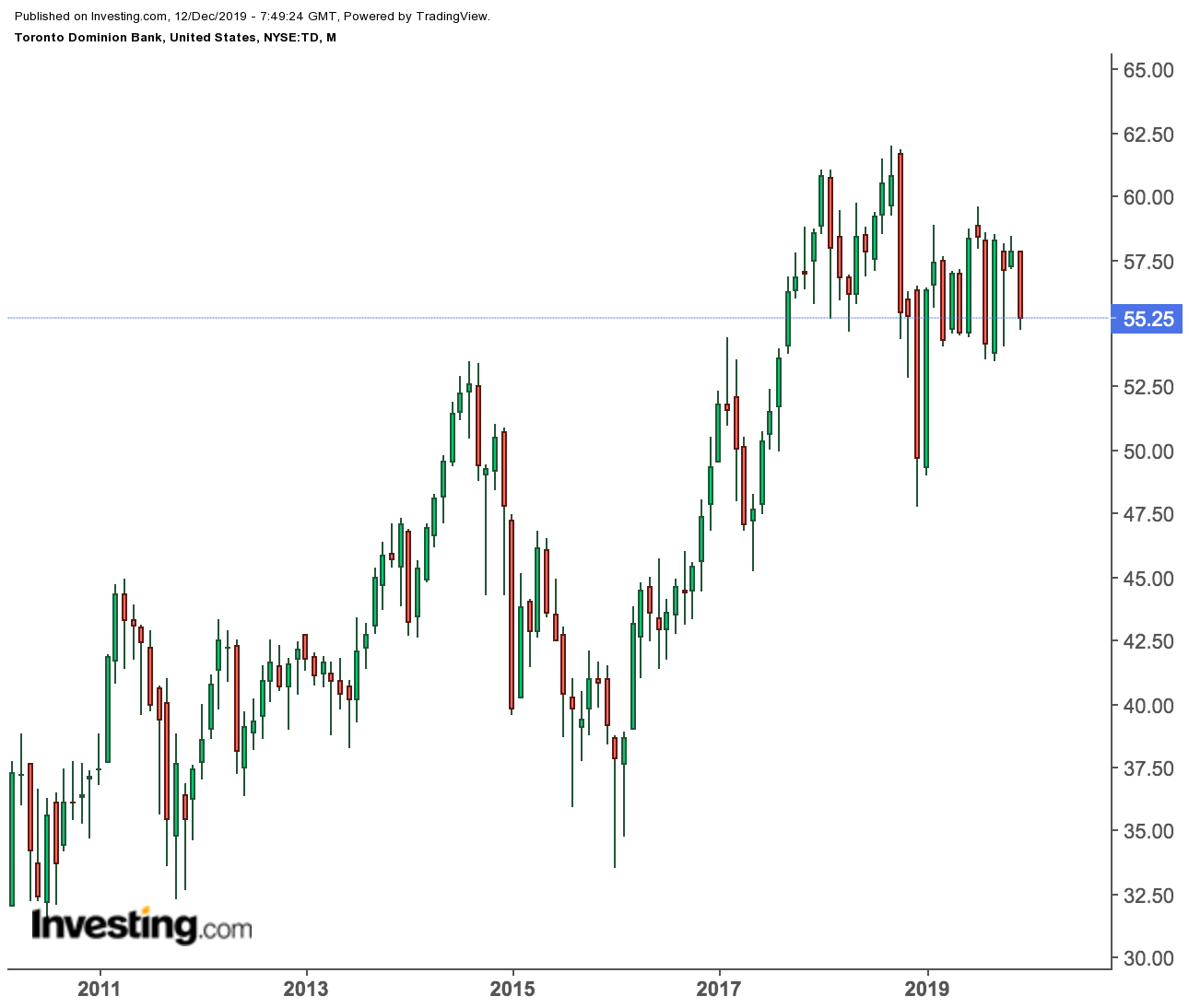If you’re just starting to invest for your golden years, the biggest challenge you will face is how to build a portfolio that will help support you well enough when you enter retirement.
Over the past decade, the world has gotten used to an environment where interest rates continue to remain low, depriving savers of low-risk investment opportunities. According to Bankrate.com, the best rate offered by the U.S. banks is not more than 2% for December.
The reality in this perpetually low interest-rate environment is that retirees need to have a good chunk of their portfolio tied to stocks in order to earn higher total returns. There's no doubt that approach requires taking more risks and means putting your savings at the whims of the market.
That being said, there are ways to manage the risk. You can do careful due diligence of the stocks you’re buying. For example, you can focus on leading companies that operate in an environment where competition is limited, the regulatory framework is favorable for their growth and they have well-established and diversified revenue bases.
That strategy will definitely take you away from all the sexy names the financial press gravitates toward. Instead, you should seek out the boring, old-economy businesses, such as power and gas utilities, key infrastructure providers, banks and insurance companies.
Dividend Growth Stocks
These are the kind of companies that continue paying dividends through the thick and thin of the market. As you continue to build your portfolio from these solid income stocks, also keep a close eye on the growth of their payouts.
Retirees shouldn’t simply chase the highest yields. The strategy we recommend: look for companies that are raising their dividend per share and are likely to keep doing so. That’s an excellent sign of financial health.
Let’s take the example of Starbucks Corporation (NASDAQ:SBUX). The global coffee-chain might not look too attractive for potential retirees if one noted only its meagre dividend yield. During the past five years, however, this stock has rewarded its investors with a big pay rise every year: its average dividend per share growth touched 23.40% per annum. After this massive hike, investors now receive a quarterly payout of $0.41 per share.
On the financial side, Canadian banks are among the best dividend-growth stocks in North America. What makes them different from their peers south of the border is less competition, a sound regulatory environment, and their diversification.
They operate in a kind of oligopoly where there's scant competition and the regulatory environment helps boost growth. Canada’s top lenders have been very consistent in rewarding investors through steadily growing dividends, on which they spend about 40%-50% of their income.
In this group, we particularly like Toronto Dominion Bank (NYSE:TD, Canada’s second-largest lender. It has a very attractive dividend policy, supported by strong growth momentum and a significant retail-banking operation in the U.S.
While chasing the best dividend-growth stocks, focus on four sectors which we think are well-positioned to pay higher dividends each year. These include banking stocks, integrated oil companies such as Chevron Corp (NYSE:CVX) and Exxon Mobil Corp (NYSE:XOM), old technology stocks like Microsoft Corporation (NASDAQ:MSFT) and growth utilities, including those involved in producing clean power, such as Nextera Energy (NYSE:NEE).
Bottom line
A carefully crafted investing strategy, based on solid dividend growth stocks, will help accumulate savings faster. Even in this low-rate environment, it is possible to earn better returns to help improve your retirement income. In order to achieve that goal, you need a disciplined investment approach, buying reliable, well-established income stocks and holding them for a long time.
